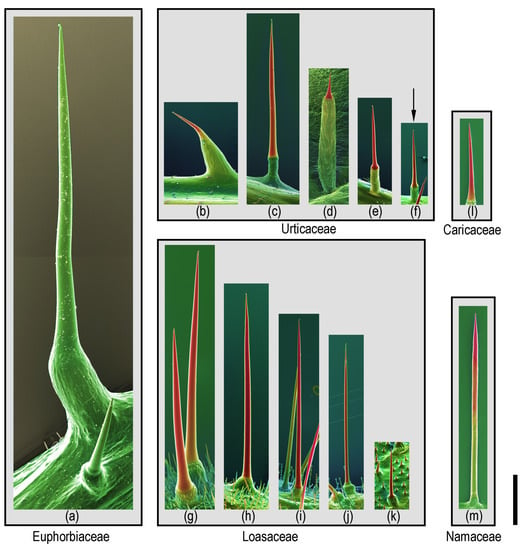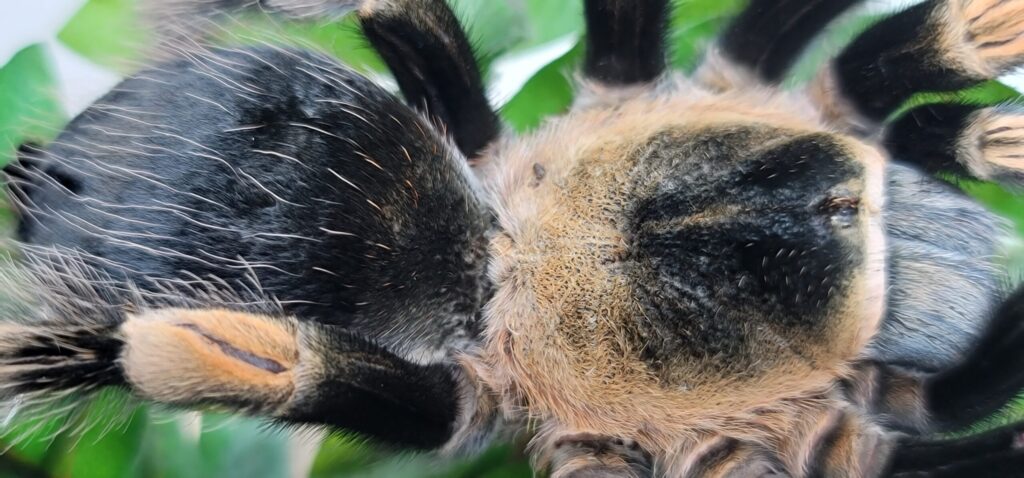Tarantulas can shoot hairs as a defense mechanism against predators or threats. These hairs, known as urticating hairs, are found on the abdomen and can cause irritation and pain when they come into contact with skin or eyes.
Introduction (120 words): Tarantulas, those fascinating eight-legged creatures, have developed a unique defense strategy in their arsenal: the ability to shoot hairs. These specialized hairs, called urticating hairs, are a rather ingenious protective mechanism found on the abdomen of tarantulas. When threatened or faced with a predator, tarantulas flick these tiny hairs into the air to deter or distract their assailant.
While this may sound harmless, these urticating hairs can cause severe irritation and discomfort when they come into contact with human skin or eyes. Understanding the fascinating world of tarantulas and their defense mechanisms sheds light on their remarkable adaptability. It reminds us of the diverse and awe-inspiring creatures that inhabit our planet’s vast ecosystems.
The Evolution Of Tarantula Defense Mechanisms
Tarantulas, highly feared arachnids known for their size and venom, have developed various fascinating defense mechanisms to protect themselves from predators and threats. These strategies have evolved, giving tarantulas a diverse range of protections. One of the most remarkable adaptations tarantulas display is their ability to shoot barbed hairs from their abdomens, known as urticating hairs.
These hairs are quickly released when the tarantula feels threatened, causing irritation and discomfort to potential attackers. Another method of defense employed by tarantulas is their impressive size and strength.
With some species reaching up to 30 centimeters in leg span, tarantulas can intimidate and fend off potential predators. Additionally, tarantulas have venomous fangs, which they use to capture and immobilize prey, but also serve as a defense mechanism against threats.
In conclusion, tarantulas have evolved defensive adaptations, including urticating hairs, size and strength, and venomous fangs. These mechanisms enable them to survive in their habitats and protect themselves from harm. Through these adaptations, tarantulas have proven incredibly well-equipped to defend themselves from predators and ensure survival in the wild.

Credit: www.mdpi.com
The Remarkable Barbed Hairs: Arsenal Or Defense Mechanism?
Understanding the composition and structure of tarantula hairs:
Tarantula hairs are fascinating structures composed mainly of keratin. Their unique barbed design allows them to cling to surfaces effectively. The hairs are distributed across the tarantula’s body, forming a hairy covering called an “urticating patch.” The tarantula sheds these hairs and can be quickly released to ward off potential threats or predators.
Tarantula hairs serve multiple purposes for these arachnids. Firstly, they act as a defensive mechanism, deterring predators by causing irritation and discomfort. Some tarantulas can flick their hairs into the air when disturbed or threatened, creating a cloud of microscopic barbed projectiles. These hairs can cause irritation and even temporary blindness if they come into contact with potential attackers’ eyes or sensitive areas.
| Step | Description |
|---|---|
| 1 | The tarantula raises its abdominal appendages, exposing the urticating patch. |
| 2 | The tarantula uses its legs to scrape and flick the barbed hairs off its abdomen. |
| 3 | The hairs are propelled through the air and directed towards potential threats. |
The Impenetrable Wall: How Tarantula Hairs Deter Predators
Investigating the effects of tarantula hairs on predators reveals a fascinating defense mechanism. Tarantula hairs pose a physical threat and inflict psychological deterrence upon potential predators, creating an impregnable shield. When threatened, tarantulas release fine hairs from their abdomens, known as “urticating hairs.”
These barbed and irritating hairs are easily dislodged from the tarantula’s body, becoming airborne. Once nearby, the hairs embed themselves into the eyes, mouth, or nostrils of predators, causing significant discomfort and potential injury. The physiological impact of tarantula hairs on predator survival is multi-faceted.
The irritating hairs cause allergic reactions, leading to inflammation and swelling, impairing the predator’s sensory abilities and vision. Moreover, the presence of these hairs may provoke an instinctual fear response in potential attackers, discouraging them from making a direct approach.
The Intricate Process: How Tarantulas Shoot Hairs
The intricate process of how tarantulas shoot hairs involves fascinating mechanisms and anatomical structures. Tarantulas possess a unique defense mechanism, where they can shoot hairs as a defense mechanism against potential threats.
The anatomy of the tarantula hair-firing apparatus plays a crucial role in this process. These specialized hairs, called urticating hairs, are on the tarantula’s abdomen. Each hair has microscopic barbs that can easily penetrate the skin or mucous membranes of predators or perceived threats.
The factors influencing the hair-shooting behavior in tarantulas are varied. These may include the tarantula’s species, age, size, and perceived threat level. Environmental factors such as temperature and humidity can also impact this behavior.
Understanding the intricate process of hair shooting in tarantulas sheds light on their remarkable defense mechanisms and ability to adapt to different situations. It also emphasizes respecting and understanding these fascinating creatures in their natural habitats.
Beyond Defense: Other Functions Of Tarantula Hairs
In the world of tarantulas, their hairs are used for defense and other essential purposes. One such function is sensory perception. Tarantulas use their hairs to detect vibrations in their environment, allowing them to sense the presence of potential prey, predators, or mates. These hairs are susceptible, allowing tarantulas to pick up on even the most subtle movements.
In addition to sensory perception, tarantula hairs may play a role in courtship and mating rituals. Male tarantulas use specialized hairs to create a “silk carpet” during a courtship display. This carpet serves as a platform for the male to perform various dances and movements to attract a female. Moreover, the male may use his hair to gently touch and stimulate the female during mating, enhancing the chances of a successful pairing.
Tarantula Species With Highly Developed Hair-shooting Abilities
A closer look at the hair-shooting techniques of specific species.
Tarantulas, known for their unique defense mechanisms, have developed highly effective hair-shooting abilities to protect themselves from potential threats. One such species is the Aphonopelma seemanni, commonly called the Costa Rican Zebra Tarantula. These tarantulas possess specialized abdominal structures called “urticating setae,” which they can release when disturbed. The barbed hairs are released into the air, deterring predators by causing intense irritation and stinging sensations upon contact with the skin or delicate membranes.
Another notable species is the Phrixotrichus scrofa, the Chilean Rose Hair Tarantula. These tarantulas also possess urticating setae, but their defense mechanism primarily relies on flicking these hairs toward potential threats. When disturbed, they rub their hind legs against their abdomen, creating a cloud of irritating hairs that effectively deter predators.
These fascinating adaptations demonstrate the diverse and ingenious ways tarantulas have evolved to protect themselves in their environments. By effectively utilizing their hair-shooting techniques, these species have ensured their survival in the face of various hazards.
Human Interaction With Tarantula Hairs: Risks And Precautions
Evaluating the Potential Dangers Associated with Tarantula Hairs
When handling tarantulas, being aware of the potential risks associated with their hair is crucial. Tarantulas have specialized hairs called urticating hairs, which they use as a defense mechanism. These tiny hairs can cause irritation and allergic reactions in humans.
Safety Measures for Handling Tarantulas and their Hairs
To minimize the risks when interacting with tarantulas, it is essential to follow safety measures. Firstly, always wear protective clothing such as gloves and long sleeves when handling tarantulas. This helps to prevent direct contact with the hairs. Secondly, avoid sudden movements or rapid gestures that may provoke a tarantula to release its hair. Additionally, it is crucial to maintain good hygiene practices, such as washing your hands thoroughly after handling a tarantula.
If you happen to experience an allergic reaction due to tarantula hairs, there are several steps you can take. Firstly, gently wash the affected area with mild soap and water to remove any remaining hairs. Applying a cold compress can help soothe itching and reduce swelling. Over-the-counter antihistamines can also provide relief. However, if the reaction is severe or persistent, it is advisable to seek medical attention.
Frequently Asked Questions For Can Tarantulas Shoot Hairs
Do Tarantulas Shoot Hairs As A Defense Mechanism?
Yes, tarantulas can shoot hairs from their abdomen as a defense mechanism. These hairs are called urticating hairs and can cause irritation and pain if they come into contact with the skin or sensitive areas such as the eyes or nose.
Tarantulas flick these hairs using their hind legs to deter predators or perceived threats.
What Are The Effects Of Tarantula Hairs On Humans?
If tarantula hairs come in contact with human skin, they can cause irritation, redness, itching, and sometimes even an allergic reaction. It is essential to avoid touching a tarantula’s abdomen or irritating areas where they may have flicked their hair.
In case of a reaction, seeking medical attention and adequately cleaning the affected area is best.
How Far Can Tarantulas Shoot Their Hairs?
Tarantulas can shoot their defensive hairs at a short distance, typically within a few inches. When threatened, they flick these hairs using their hind legs, aiming them towards the perceived threat. While they may not have the accuracy or range of a projectile, the hairs can still irritate and deter predators from getting too close.
What Is The Purpose Of Tarantula Shooting Hairs?
Tarantulas shoot their hair as a defense mechanism to protect themselves from predators or perceived threats. These urticating hairs act as a deterrent by irritating the skin or sensitive areas of potential predators, causing discomfort and pain. The hairs can also serve as a warning sign, signaling to predators that the tarantula is not to be messed with.
Conclusion
Tarantulas are fascinating creatures that can shoot hairs as a defense mechanism. These tiny, barbed hairs can cause irritation and discomfort to predators and even humans. Understanding the tarantula’s unique defense mechanism is crucial for anyone encountering these intriguing spiders.
Knowing how to handle and respect these creatures allows us to coexist peacefully and appreciate their role in our ecosystem. So, let’s be mindful and respectful of tarantulas and their unique ability to shoot hair.
